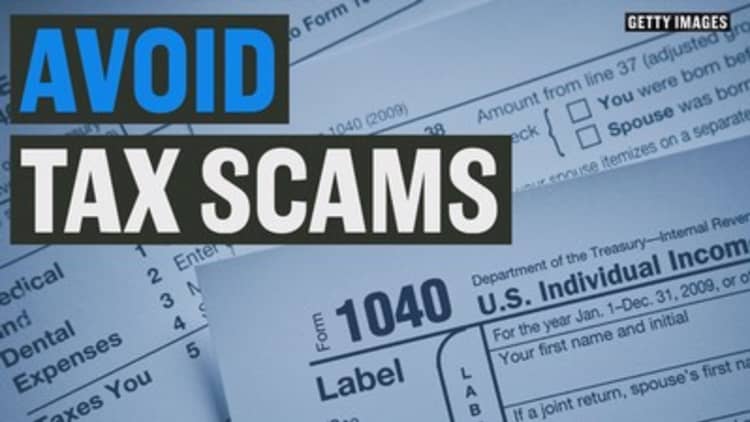
If you want to save money, dust off your 2016 tax return.
Back in April, after your preparer filed your Form 1040, you probably took your refund or paid your bill and stashed the paperwork in a file somewhere.
That's a mistake, according to Andrew Watts, director, wealth management at HD Vest Financial Services.
"The 1040 is like an X-ray into the client's financial health that invites a deeper conversation around how to improve their financial future," Watts said.
These five portions of the form will help you save on taxes, put away even more money for retirement and ensure that your insurance coverage is up to par.
Know your dependents
Line 6C is where you list your dependents. Most of the time, it's your kids, but don't forget that adults can count, too.
A qualifying relative under the IRS definition must meet several tests, including the requirement that they are a member of your household or your immediate family, and their gross income for the year must be below $4,050. You must provide more than half of that person's support.
For instance, if you foot the bill at your elderly parent's care facility, you may be able to claim him or her as your dependent.
If you have those types of dependents, make sure you have enough life and disability insurance to continue providing support in the event something happens to you.
"Life insurance tends to be overlooked by advisors, and some of them might think the client is covered through a policy at work," Watts said.
Often the coverage you have through a workplace plan is insufficient: The general rule of thumb is to have a death benefit that's equal to 10 times your income.
Maximize tax deferrals
Turn to lines 8a, 8b, 9a and 9b to get the low-down on your income from dividends and interest.
Line 13, meanwhile, refers to capital gains and losses.
If your investments are generating large amounts of taxable interest, dividends and gains, it might be time to think about where you're holding those assets and whether you should move them to a more tax-friendly account.
"An investment that's kicking off ordinary income should be in a tax-deferred account [like an IRA] instead of a taxable account," Watts said.
Step up savings
If you're a freelancer, look at line 12 to see how much you've earned from your gigs — and consider what you'd save on taxes and for retirement if you stashed that money in a retirement account.
The 1040 is like an X-ray into the client's financial health that invites a deeper conversation around how to improve their financial future.Andrew WattsHD Vest Financial Services
"Many times with sole proprietorships, these businesses are neglecting SEP-IRAs and SIMPLE IRAs," said Watts. Consider that the maximum contribution for a simplified employee pension plan or SEP-IRA is $54,000 for 2017 or up to 25 percent of your compensation.
Meanwhile, the most you can save in a SIMPLE IRA this year is $12,500, plus a catch-up contribution of $3,000 if you're 50 and over.
Contributions for self-employed workers are deductible.
Watch your IRA distributions
If you took money out from your retirement account, you'll find that information on line 15.
If you're under age 59½, you probably incurred a 10 percent penalty along with income tax for making this move, so think about why you needed the money.
"We're talking about someone encountering a situation where they feel there is no other option but to use the IRA," said Watts. "Work on your debt management and don't withdraw from your IRA."
If you're 70½ and up, and you've taken the required minimum distribution (RMD) from your IRA but you don't need the money, talk with your accountant about how to make the most out of that extra bit of cash.
Consider the qualified charitable distribution. In this case, money that is coming out of your IRA to meet the required minimum distribution will go directly to a qualified charity instead.
This strategy has a bonus: The dollars you're giving away won't inflate your adjusted gross income.
Rental property bonanza
If you made money from renting property, the income will be listed on line 17. That line will also reflect any income from trusts.
Landlords should consider whether they need to review their insurance: Is it time to buy an umbrella policy that will provide coverage above and beyond the limits of the homeowners policy?
This is because if a tenant is injured on your property, the legal claim he or she may file could exceed the limits of your liability coverage. In that case, the umbrella policy will make up the shortfall.
Meanwhile, if you're reporting trust income, consider taking a second look at your estate planning documents and your beneficiary designations on your retirement accounts and life insurance policies.
Bear in mind that trusts only have to produce more than $12,500 in income in order to be taxed at the top rate of 39.6 percent — a number that will surely grab your attention as you take a second look at your 1040.
"Make sure your trusts and wills are updated," Watts said. "That means you need to have a conversation around beneficiary review."






